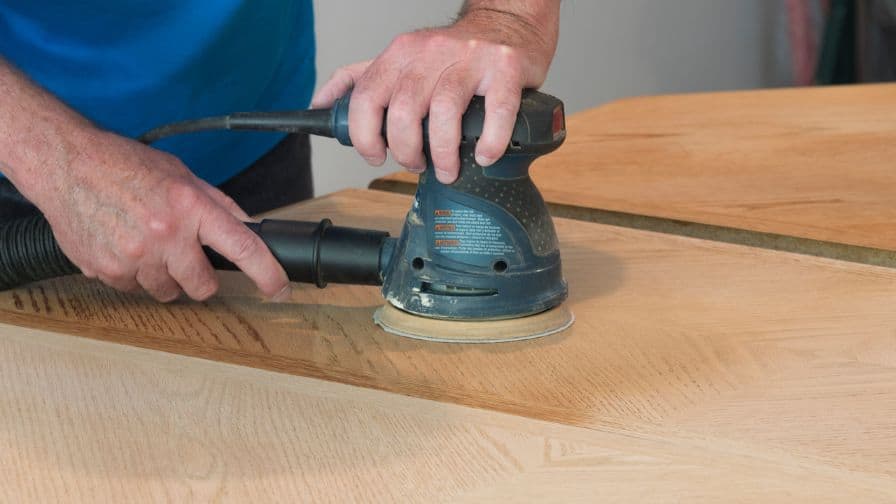
When you are working on a wood project, it is important to use a sealant to protect the wood from damage. One of the most popular sealants on the market today is Varathane. This product comes in a variety of finishes, including clear and satin. You may be wondering if you need to sand between coats of Varathane.
In this blog post, we will answer that question and give you some tips on how to get the best results when using this product!
Do I Need To Sand Between Coats Of Varathane?
Yes, in order to get the best result you should sand between coats of Varathane. If you don’t sand between coats, the finish may not be as smooth as you’d like it to be.
The best way to sand between coats of Varathane is to use a fine-grit sandpaper. You should also make sure that you sand in the same direction as the grain of the wood.
Subscribe to Mike Meegan on YouTube
What Is Varathane And What Are Its Benefits
Varathane is a clear finish that is applied to wood to protect it from scratches, stains, and other damage. It is available in both water-based and oil-based formulas. Varathane provides a durable finish that will last for years with proper care.
There are several reasons why you might want to use Varathane on your woodworking projects.
- First, it will provide excellent protection from scratches and stains.
- Second, it will enhance the natural beauty of the wood grain.
- Third, it is available in a variety of sheens, so you can choose the one that best suits your needs.
So, if you are looking for a clear finish that will provide protection and enhancement to your woodworking projects, Varathane is an excellent choice.
How Long Do I Wait Before Sanding Between Coats Of Varathane?
Per the manufacturer you can start to sand and recoat after 4 hours. This will vary depending on the temperature and humidity. If it is cooler then you will need to wait longer for the coat to dry before sanding and moving on to your next coat.
How To Sand Between Coats Of Varathane
It’s important to sand between coats of Varathane to ensure a smooth, even finish. The best way to do this is with a fine-grit sandpaper. Simply sand in the direction of the grain until the surface is smooth. Then, wipe away any dust with a clean cloth before applying the next coat.
If you’re working with a larger surface area, you may need to use a power sander to make the job go faster. Just be sure to sand evenly and in the direction of the grain to avoid damaging the wood. Once you’re finished, wipe away any dust before applying Varathane.
Can You Apply A Second Coat Of Polyurethane Without Sanding?
The short answer is, yes you can. Applying a second coat of polyurethane without sanding is perfectly fine if you do it carefully but the quality of your finish will be lower. The main thing to watch out for is applying the second coat too soon after the first. If you wait too long, however, you’ll need to sand before applying the second coat.
One thing to keep in mind is that if you’re going to be applying a second coat of polyurethane without sanding, it’s important to use the same type of finish. For example, if you used a water-based polyurethane for the first coat, you’ll need to use a water-based polyurethane for the second coat as well. Using a different type of finish will likely result in an uneven appearance.
So, there you have it. You can apply a second coat of polyurethane without sanding now that you know how. Just be sure to use the same type of finish and wait at least 24 hours before light use.
Subscribe to Ben Builds It on YouTube
What Happens If I Don’t Sand Between Coats Of Polyurethane?
If you don’t sand between coats of polyurethane, the finish will be more likely to fail. The finish may also have a rough texture. Sanding between coats of polyurethane removes any imperfections in the previous coat and provides a smooth surface for the next coat. Polyurethane is a durable finish, but it can be damaged by abrasion, chemicals, heat, or cold. A finish that is not properly sanded is more likely to be damaged.



